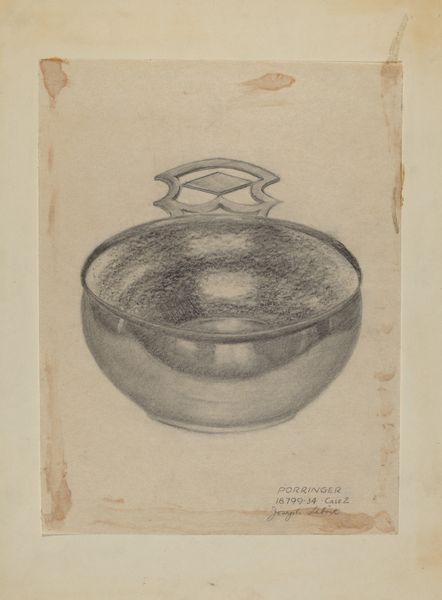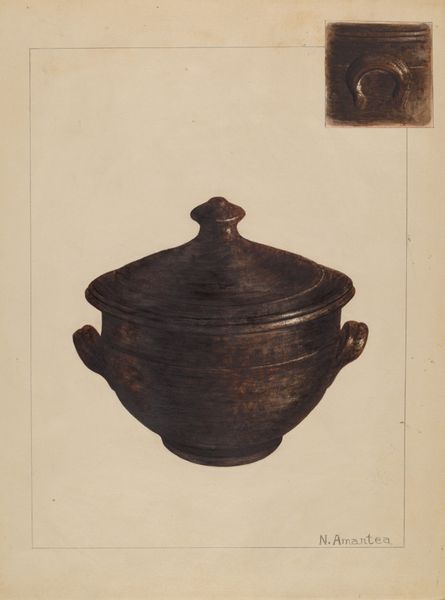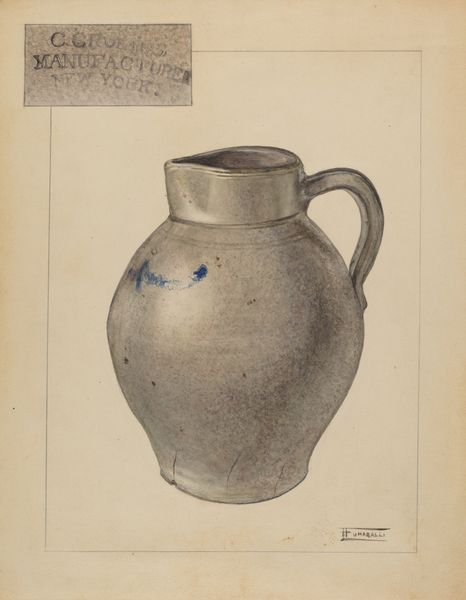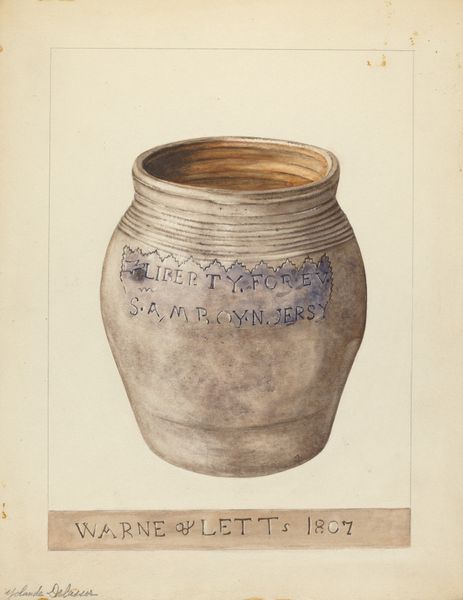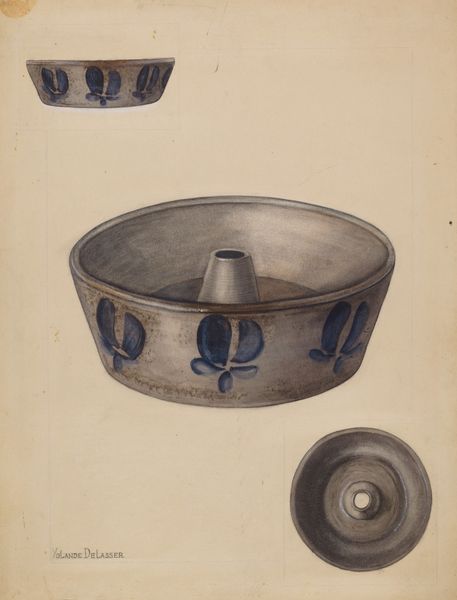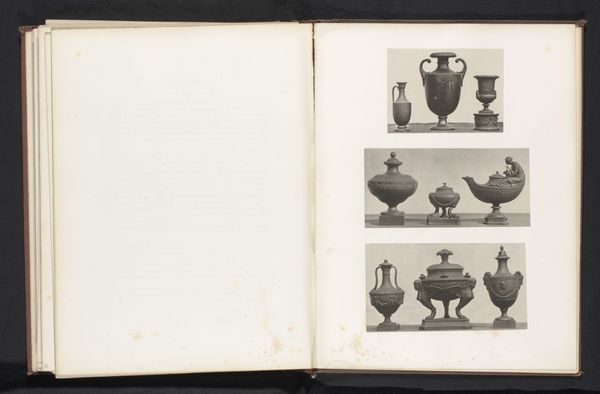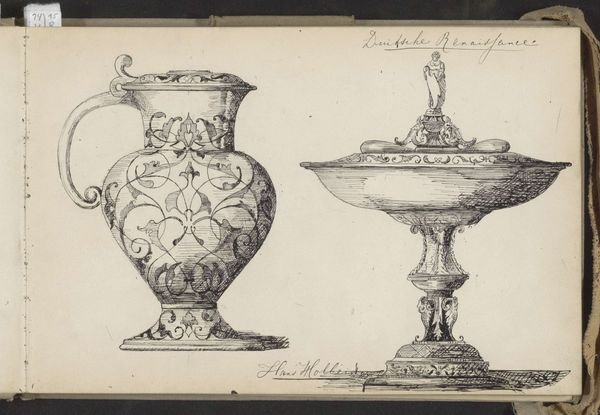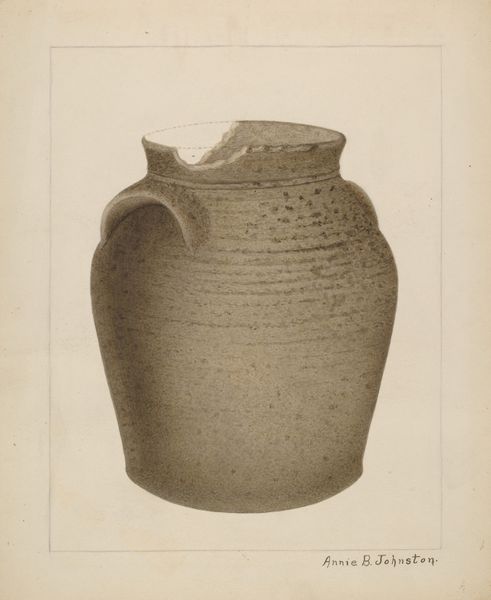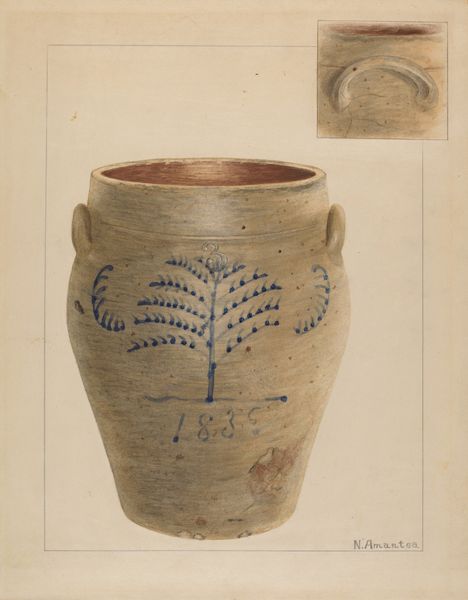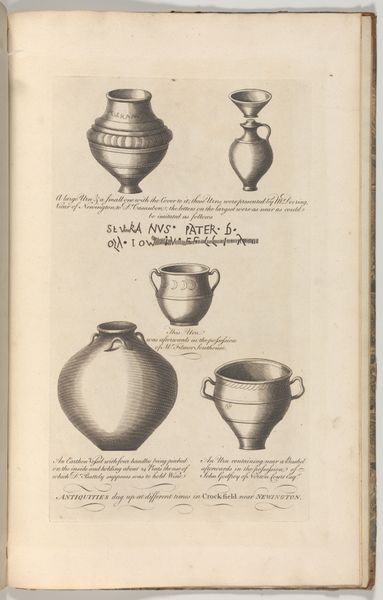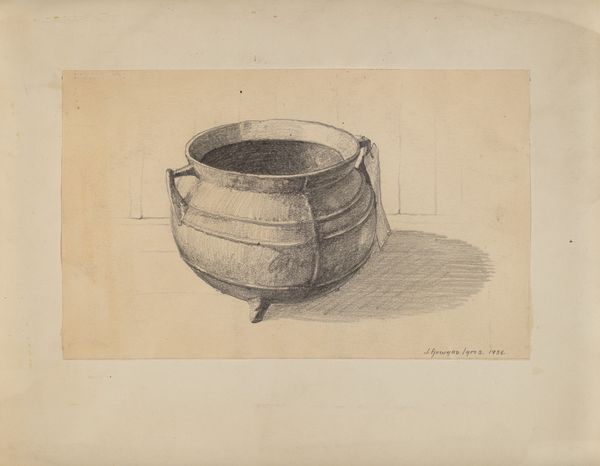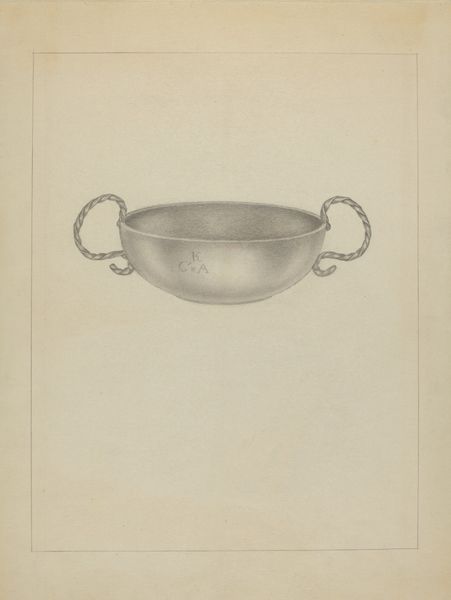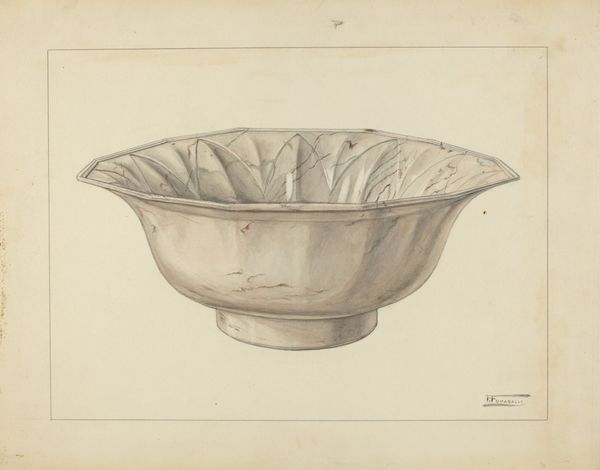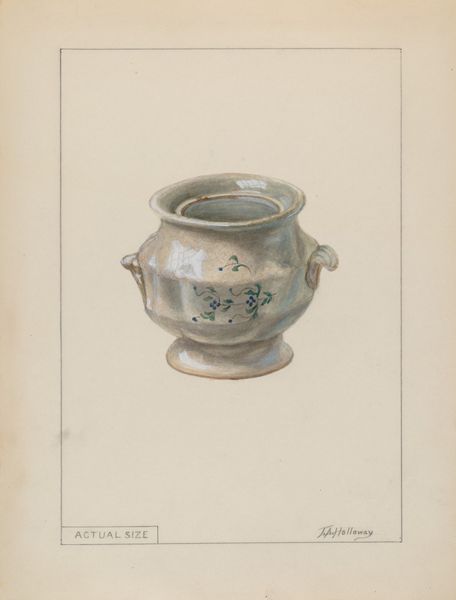
drawing, paper, watercolor
#
drawing
#
water colours
#
paper
#
watercolor
#
coloured pencil
#
15_18th-century
Dimensions: height 195 mm, width 155 mm
Copyright: Rijks Museum: Open Domain
Curator: Alright, let's dive into this compelling image. It's a drawing called "Urn," created in 1776 by Jan Brandes. He rendered it with watercolor and coloured pencil on paper. Editor: Hmm, my first thought is that it looks melancholic— a blue-gray palette and a fragile stillness like a quiet afternoon long, long ago. Curator: Precisely! Brandes wasn't just depicting an object. It’s said to be an urn he discovered in Gelderland, by the planting of oak wood close to the Monster mountain; I wonder, what drew him to sketch an excavated urn? Editor: Perhaps he was taken by the simple elegance of its form. Observe the curvature of the vessel—a satisfying geometric structure where the lip and base mirroring each other create an almost symmetrical balance—though broken by hand made qualities and a more free surface. He notes that "Daar waaren er kleynder ½ maal en grooter 7 maal," implying a relative context; could he be suggesting ideas around scale or quantity? Curator: Intriguing, you highlight that his intentions could lead into wider, theoretical understandings on death, ritual or scale, all very current art themes. But from my angle, it strikes me he found beauty in a vessel unearthed. Think about the hands that made it, what was poured or burned in it. Brandes captures not only an object but also the stories it carries. The blues and browns of the paper itself add another layer – a sense of time etched right into the materials. It’s evocative, don’t you think? Editor: Absolutely evocative! In semiotic terms, the image operates as a signifier, hinting at themes of mortality and memory while referencing classical forms. His quick handwriting, scribbled across the top and lower pages seem very relevant to the idea of a sketch. But the drawing feels unfinished, deliberately left as a question instead of statement. Curator: See? It works both ways— Brandes probably thought no more, "Just found an urn; should make art!". Editor: And yet, here we are! Another angle to add to the collective understanding. Curator: Exactly. Let's move on and let others explore it for themselves!
Comments
No comments
Be the first to comment and join the conversation on the ultimate creative platform.
